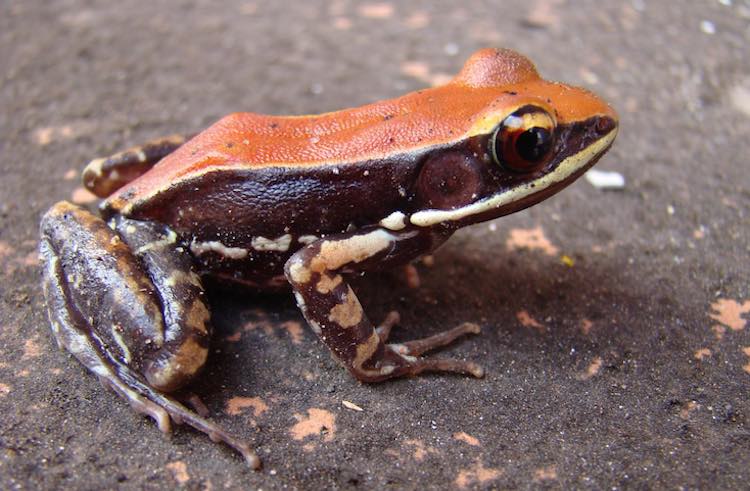Frog mucus is loaded with molecules that kill bacteria and viruses, and researchers are beginning to investigate it as a potential source for new anti-microbial drugs.
When they studied a colorful tennis-ball-sized frog species from southern India, they found a “host defense peptide” with the ability to destroy many strains of human flu.
“I was almost knocked off my chair,” says flu specialist and study co-author Joshy Jacob of Emory University. “In the beginning, I thought that when you do drug discovery, you have to go through thousands of drug candidates, even a million, before you get 1 or 2 hits. And here we did 32 peptides, and we had 4 hits.”
RELATED: Platypus Venom Could Hold Key to Diabetes Treatment
”We just happened to find one the frog makes that just happens to be effective against the H1 influenza type.”
Practically all animals make at least a few anti-microbial host defense peptides as part of their innate immune systems, and researchers are only beginning to catalog them. However, frogs have drawn the most attention as a source of host defense peptides, because it’s relatively easy to isolate the peptides from their mucus. Researchers can simply rub a powder on the frogs to make them secrete their defense peptides, which can then be collected.
POPULAR: Pills Made Especially for Girl’s Rare Cancer Completely Eliminate Tumors
Researchers from the Rajiv Gandhi Center for Biotechnology in Kerala, India, have been isolating peptides from their local frogs and screening them for potential anti-bacterials, but Jacob wondered if there might also be peptides that neutralize human-infecting viruses. Jacob and his colleagues screened 32 frog defense peptides against an influenza strain and found that 4 of them had flu-busting abilities.
The researchers named the newly identified peptide “urumin,” after the urumi, a sword with a flexible blade that snaps and bends like a whip, which comes from the same Indian province, Kerala, as the frog.
Click To Share This Hopping Good Story With Your Friends – OR, (Photo by Sanil George and Jessica Shartouny)




















